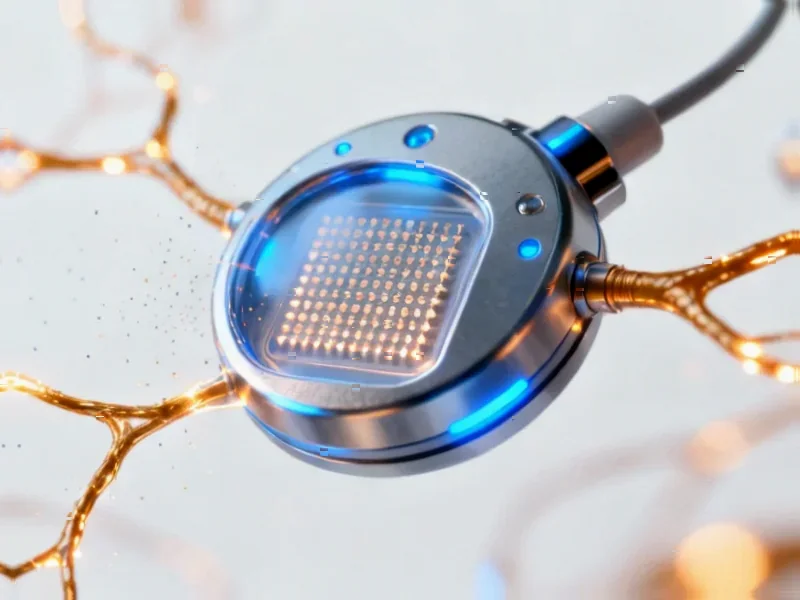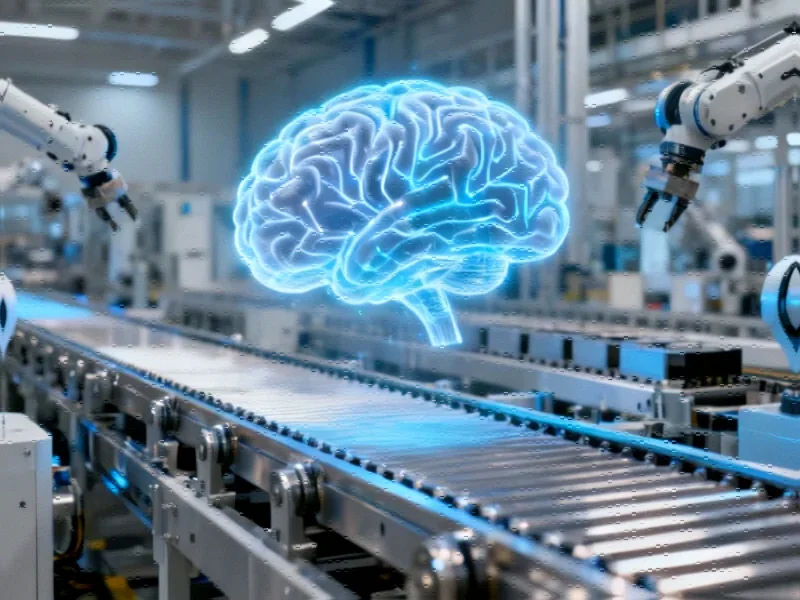Breakthrough Method Connects Neuronal Function and Structure
Scientists have developed a groundbreaking correlative imaging technique that directly bridges the gap between neuronal electrical activity and molecular structure, according to research published in Nature Communications. The new method, termed Correlative Voltage imaging and cryo-ET (CoVET), combines voltage imaging with cryo-electron tomography to simultaneously capture electrical activity and high-resolution molecular details within the same neurons.
Table of Contents
Sources indicate this approach represents a significant advancement in neuroscience research methodology, enabling researchers to classify neurons based on their electrophysiological properties before examining their molecular architecture. The report states this eliminates subjective bias and provides clearer interpretation of how electrical activity correlates with structural components at the molecular level.
Customized Hardware Enables Precise Correlation
To implement the CoVET approach, researchers designed specialized equipment including a doughnut-shaped grid holder made of stainless steel with a central stepped hole, according to the published methodology. The 18mm outer diameter was reportedly tailored for compatibility with commercial optical imaging chambers and electric field stimulators. This custom hardware allowed reversible securing of TEM grids while maintaining neuronal health through a sandwich culture system.
Analysts suggest the technical innovations addressed several longstanding challenges in correlative microscopy. The low-density culture system achieved approximately 15,000 cells/cm² while maintaining neuronal health through an astrocyte feeder layer. The report states neurons cultured with this feeder layer showed significantly increased neurite development compared to those without, forming functional neural networks essential for valid electrophysiological studies.
Electrophysiological Classification Reveals Neuronal Diversity
Using voltage-sensitive probe BeRST1 and electric field stimulation, researchers characterized the electrophysiological properties of individual neurons, the study details. Analysis revealed considerable heterogeneity in neuronal responses, with some cells showing consistent action potentials while others displayed weak, irregular, or completely absent responses to stimulation.
Through Hierarchical Clustering Analysis using three parameters—peak value, decay parameter, and reproducibility—neurons were classified into three distinct response clusters: strongly responsive, moderately responsive, and non-responsive. According to reports, this classification provided the foundation for targeted cryo-ET experiments, ensuring that molecular analysis could be directly linked to specific electrophysiological profiles.
Revealing Ribosomal Landscapes Tied to Electrical Activity
The most significant findings emerged when researchers examined ribosomal structures within neurons from different electrophysiological clusters. Using cryo-FIB/SEM to mill neuronal somas and cryo-ET for imaging, scientists identified 31,389 ribosomal particles across all tomograms, achieving a consensus map with 7.8Å resolution., according to market developments
Comprehensive structural analysis revealed eight distinct classes of ribosomes, differentiated by their density at key ribosomal binding sites. Seven conformations aligned with known stages in the elongation cycle, while one represented a translationally inactive state consistent with hibernating ribosomes containing eEF2.
Notably, the report states that strongly responsive neurons exhibited a significantly higher proportion of ribosomes in the decoding1 state compared to moderately and non-responsive clusters. Additionally, strongly responsive clusters displayed distinct polysomal patterns with sharp peaks below 9nm, characteristic of active translation complexes.
Implications for Neuroscience and Beyond
This research demonstrates that translational landscapes and contextual properties differ depending on neuronal electrophysiological responsiveness, according to the analysis. Although the direct relationship between responsiveness and translational activity requires further investigation, the methodology establishes a powerful new paradigm for studying structure-function relationships in neuroscience.
The successful development of CoVET reportedly opens new possibilities for understanding how electrical activity regulates molecular machinery in neurons. Researchers suggest this approach could be applied to study various neurological conditions, potentially revealing how diseases affect the relationship between neuronal firing patterns and protein synthesis.
The technical advancements in correlative imaging, including the custom grid holder and optimized culture conditions, may also benefit other fields requiring connection between cellular function and molecular structure, according to analysts familiar with the methodology.
Related Articles You May Find Interesting
- TerraMaster Launches High-Performance NAS Systems With AI Security Features
- Rightcharge Secures €1.8M to Revolutionize European Fleet EV Charging Infrastruc
- SAP Secures 85% of 2026 Revenue Pipeline as AI Deals Accelerate
- AI-Powered Search Engines Threaten Google’s $200 Billion Ad Revenue Model
- Galactic Origins Shape Rocky Worlds’ Core Compositions and Habitability Potentia
References
- http://en.wikipedia.org/wiki/Astrocyte
- http://en.wikipedia.org/wiki/Scanning_electron_microscope
- http://en.wikipedia.org/wiki/Electrophysiology
- http://en.wikipedia.org/wiki/Hippocampus
- http://en.wikipedia.org/wiki/Electric_field
This article aggregates information from publicly available sources. All trademarks and copyrights belong to their respective owners.
Note: Featured image is for illustrative purposes only and does not represent any specific product, service, or entity mentioned in this article.



